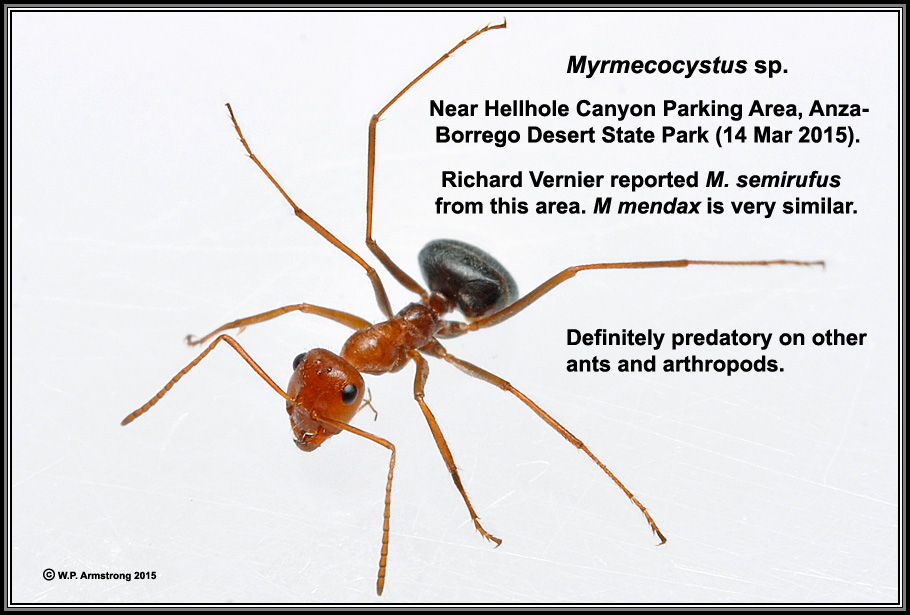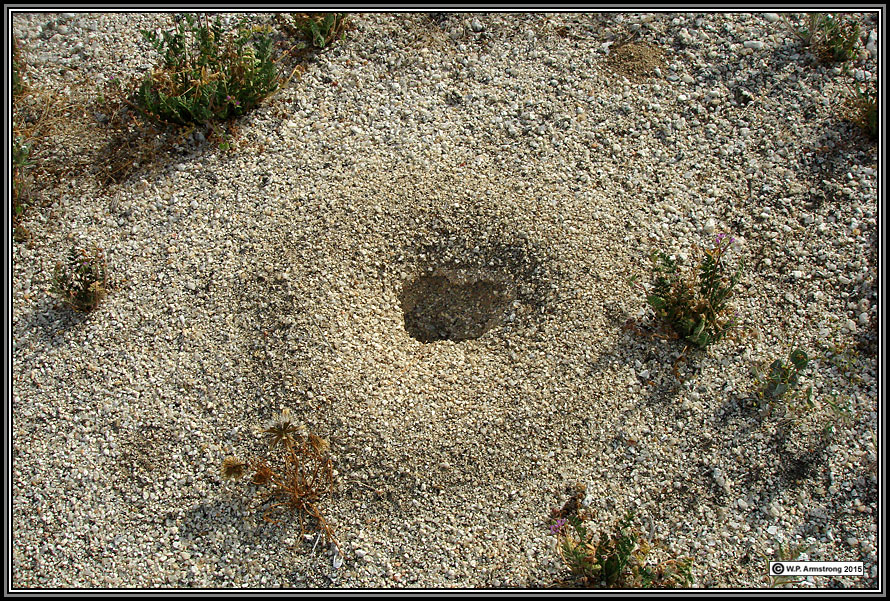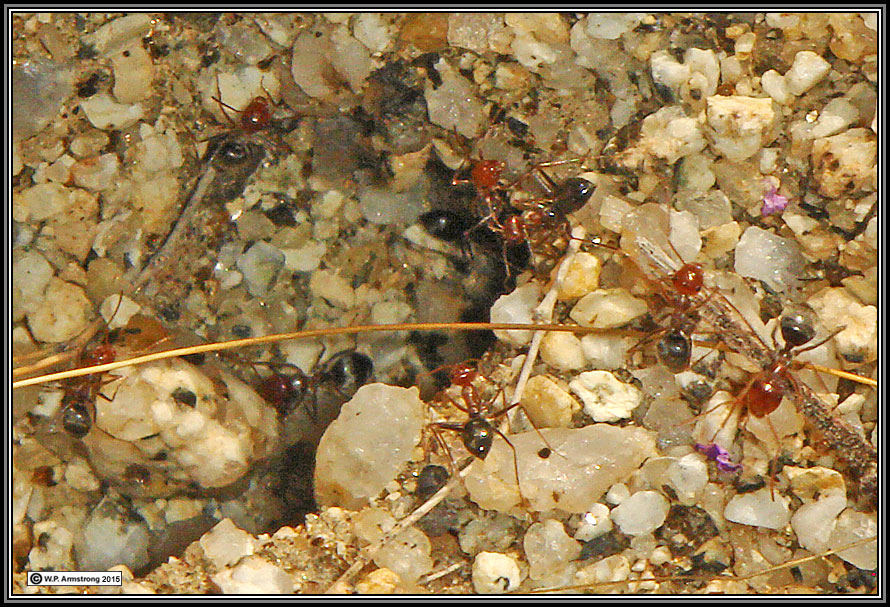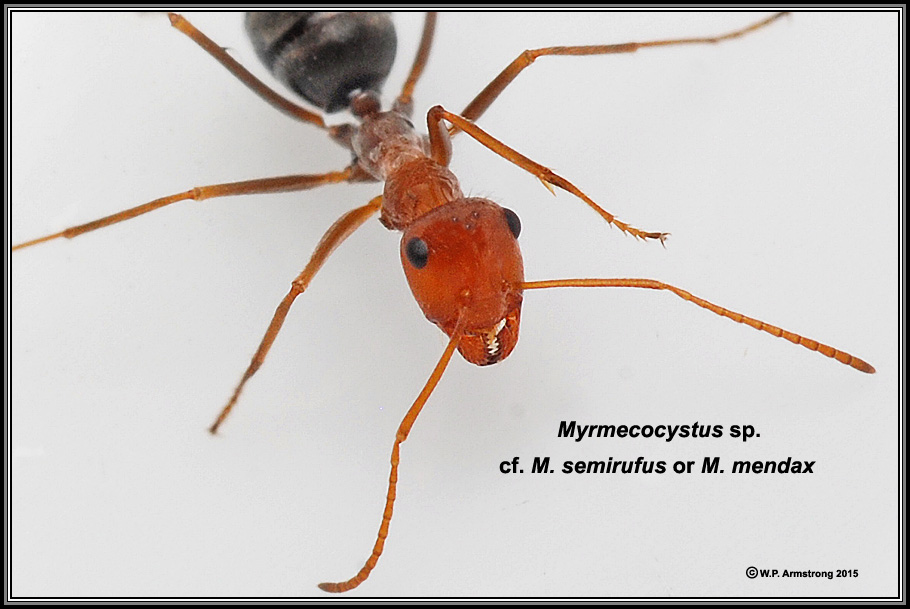|
The nest entrance of above honeypot ant. In general, the nests in this area have shallow craters with a relatively large circular entrance in center. They are not as well-defined as the craters of nearby harvester ants (Messor pergandei) and do not have the piles of seedless husks..
According to Pinau Merlin (A Field Guide To Desert Holes, 2003): "Honeypot ant nests are hard to define, with no distinctive shape and no cone. The entrance hole is about 2 inches in diameter, and could be mistaken for a harvester ant hole."
In my opinion, harvester ant nests (Messor and Pogonomyrmex) usually have a distinct crater-like cone covered on the outside with dense layer of seedless husks from nearby shrubs and wildflowers. Myrmecocystus nests may have just a opening in the sand, or resemble shallow craters. Depending on the species and age of the colony, the crater-like nests of some Myrmecocystus can be quite distinct.
|







